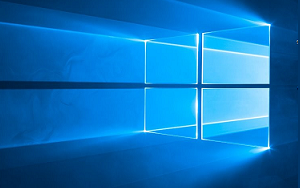Gmail users often face storage limitations which can hinder email functionality and efficiency. This detailed guide provides professional insights and step-by-step instructions to effectively manage and optimize storage space in Gmail, ensuring smooth email operations.
Introduction
In today's digital age, email communication is indispensable, with Gmail leading the way as a preferred choice for millions. However, with extensive usage, storage management becomes a crucial aspect of maintaining Gmail's efficiency. This guide delves into the various strategies and tools you can employ to manage your Gmail storage effectively.
Understanding Gmail Storage
Gmail offers a combined storage space shared across Google Drive, Google Photos, and Gmail itself. As of October 2023, every Google account comes with 15GB of free storage. The accumulation of emails, attachments, and other data can quickly consume this space, necessitating effective storage management.
Checking Your Current Storage Usage
Before you start optimizing, it is essential to know your current storage usage. Follow these steps:
- Open Gmail and log into your account.
- Scroll to the bottom of your inbox.
- Find the storage usage indicator which shows the amount of storage used out of the total available.
- Click on the 'Manage' link for a detailed breakdown of storage usage across Gmail, Google Drive, and Google Photos.
Deleting Unnecessary Emails
To free up storage, start by deleting emails that are no longer needed. Here's how:
- Search for large attachments: Use the search query
has:attachment larger:10Mto find emails with large attachments. Delete any unnecessary ones. - Filter by date: Use
older_than:1yto find emails older than a year and consider deleting them if they are not needed. - Empty Trash and Spam: Regularly empty the Trash and Spam folders to ensure deleted emails no longer occupy space.
Utilizing Google Drive and Google Photos
Since Gmail shares storage with Google Drive and Google Photos, managing these can help free up space:
- Google Drive: Delete or move large files that are no longer needed. Consider using Google's file compression tools to reduce file sizes.
- Google Photos: Enable the 'Storage Saver' option to reduce the size of photos and videos. Delete duplicates and unnecessary media files.
Using Google One for Additional Storage
If you find that 15GB is insufficient, consider upgrading to Google One, which provides additional storage options:
- Basic Plan: 100GB of space for a small monthly fee.
- Standard Plan: 200GB, which includes additional features like family sharing.
- Premium Plan: 2TB or more, suitable for users with extensive storage needs.
Upgrading can be done through the Google One website or app, providing seamless integration with your existing Google services.
Archiving Emails
For emails that you want to keep but not access frequently, use the Archive feature:
- Select the emails you want to archive.
- Click on the Archive button (an icon of a box with a down arrow).
- Archived emails are moved out of your inbox but can be accessed anytime by searching for them.
Using Gmail's Built-In Tools
Gmail offers several built-in tools to help manage storage:
- Search Filters: Use Gmail's powerful search filters to find and manage large, old, or specific types of emails.
- Labels and Categories: Organize emails into labels and categories, making it easier to identify and delete unnecessary ones.
Clearing Out Sent Mail and Drafts
Often overlooked, the Sent Mail and Drafts folders can contain emails that unnecessarily occupy space:
- Navigate to the Sent Mail folder and delete any emails that do not need to be retained.
- Check the Drafts folder for incomplete emails and delete any that are no longer needed.
Conclusion
Effectively managing Gmail storage is essential for maintaining optimal email functionality. By employing these strategies, you can ensure that your Gmail account remains organized and efficient. Regular monitoring and maintenance will help you avoid storage limits and keep your communication seamless.







